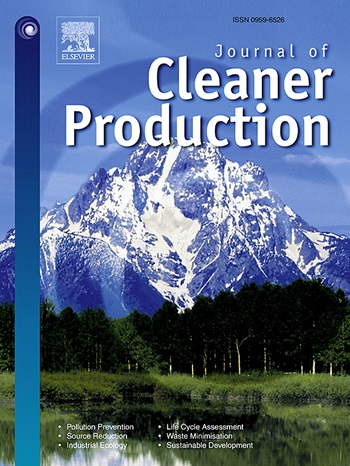硫酸焙烧法回收废锂镍钴锰氧化物:揭示产物演化机理
IF 9.7
1区 环境科学与生态学
Q1 ENGINEERING, ENVIRONMENTAL
引用次数: 0
摘要
为了减轻废旧锂离子电池对环境的影响,提高相关产业的可持续性,锂镍钴锰氧化物(LiNixCoyMnzO2)正极材料的回收至关重要。硫化焙烧是LiNixCoyMnzO2阴极的一种强有力的回收方法,但工业上受ab2o4型尖晶石过渡金属氧化物、硫化物或硫氧化物(SOx)生成的限制,其产物的形成过程(特别是过渡金属硫化物的形成过程)尚不清楚。本文揭示了焙烧过程中的中间反应和产物。我们研究了硫化物的产生对回收的影响,并试图消除有害的副反应。温度和石墨是决定硫化物形成的两个关键参数,随着温度的升高,焙烧产物由硫酸盐到氧化物再到硫化物。在优化的实验条件下,抑制了硫化物和ab2o4型尖晶石氧化物的生成,Li浸出效率达到98%以上,SOx排放量最小,过渡金属损失可忽略不计(小于3%),实现了LiNixCoyMnzO2正极材料的清洁有效回收。本文章由计算机程序翻译,如有差异,请以英文原文为准。

Recycling of Spent Lithium Nickel Cobalt Manganese Oxides via Sulfuric Acid Roasting: Revealing the Product Evolution Mechanism
To mitigate the environmental impacts of spent lithium-ion batteries and enhance the sustainability of relative industry, the recovery of lithium nickel cobalt manganese oxide (LiNixCoyMnzO2) cathode materials is of paramount importance. Sulfation roasting is a powerful recycling method of LiNixCoyMnzO2 cathode but industrially restricted by the generation of AB2O4-type spinel transition metal oxides, sulfides or sulfur oxides (SOx), and the product formation process (especially of transition metal sulfides) is not well understood. In this paper, we reveal the intermediate reactions and products of the roasting process. We investigate the impacts of sulfide generation on recycling and make certain attempts to eliminate the hazardous side reactions. The temperature and graphite are two key parameters determining the formation of sulfides and the roasting products evolved from sulfates to oxides and then to sulfides with the temperature increasing. Under optimized experimental conditions, we suppress the generation of sulfides and AB2O4-type spinel oxides and obtain a Li leaching efficiency of over 98%, minimal SOx emission and negligible loss of transition metals (less than 3%), achieving the clean and effective recycling of LiNixCoyMnzO2 cathode materials.
求助全文
通过发布文献求助,成功后即可免费获取论文全文。
去求助
来源期刊

Journal of Cleaner Production
环境科学-工程:环境
CiteScore
20.40
自引率
9.00%
发文量
4720
审稿时长
111 days
期刊介绍:
The Journal of Cleaner Production is an international, transdisciplinary journal that addresses and discusses theoretical and practical Cleaner Production, Environmental, and Sustainability issues. It aims to help societies become more sustainable by focusing on the concept of 'Cleaner Production', which aims at preventing waste production and increasing efficiencies in energy, water, resources, and human capital use. The journal serves as a platform for corporations, governments, education institutions, regions, and societies to engage in discussions and research related to Cleaner Production, environmental, and sustainability practices.
 求助内容:
求助内容: 应助结果提醒方式:
应助结果提醒方式:


